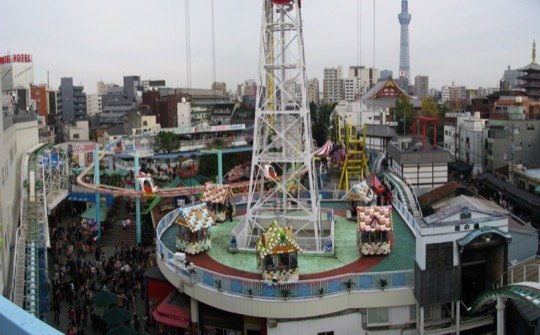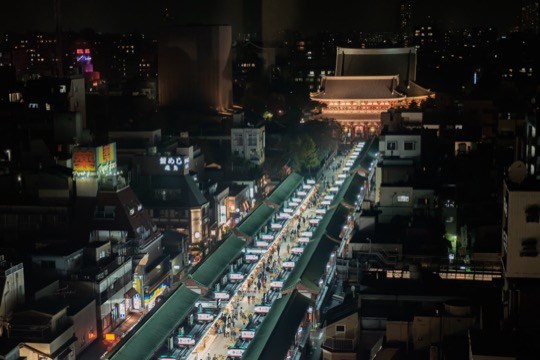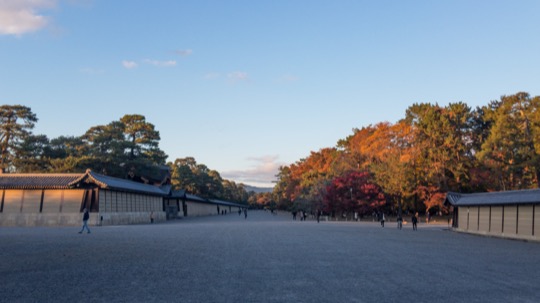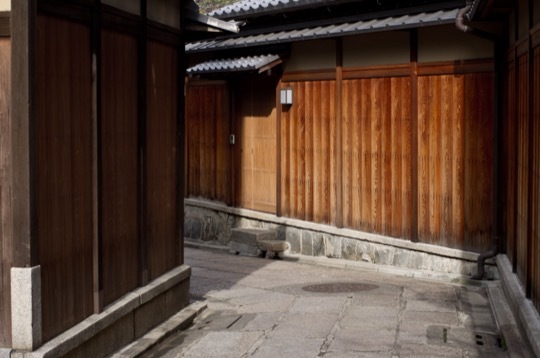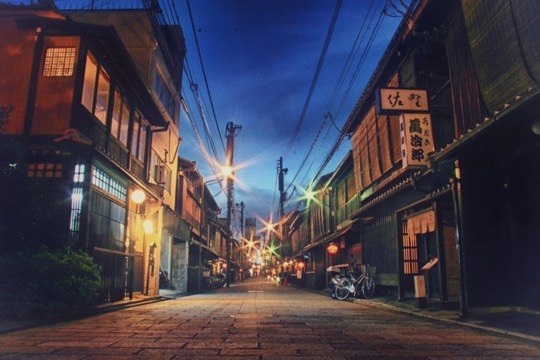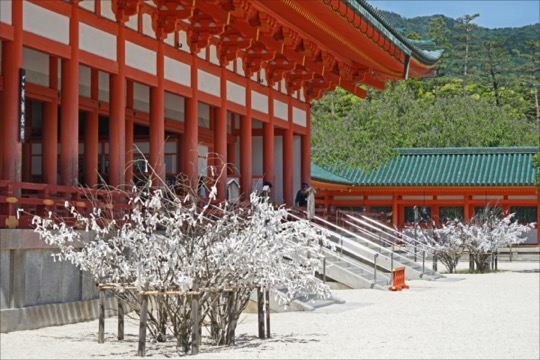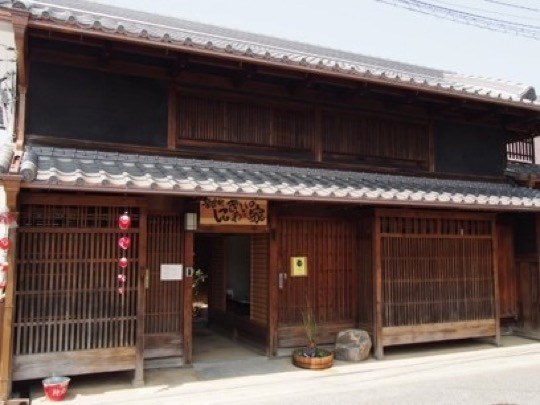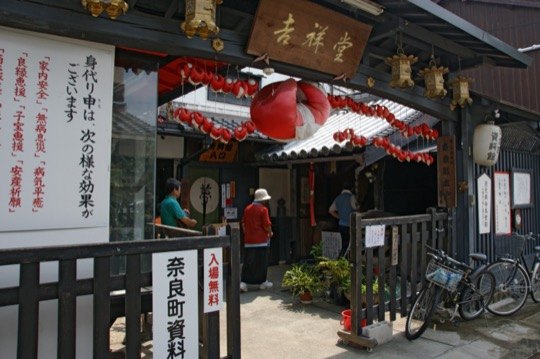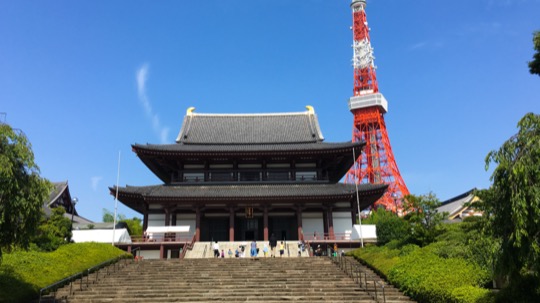Kaminarimon Thunder Gate
Iconic red lantern gateway to Asakusa’s Sensoji Temple
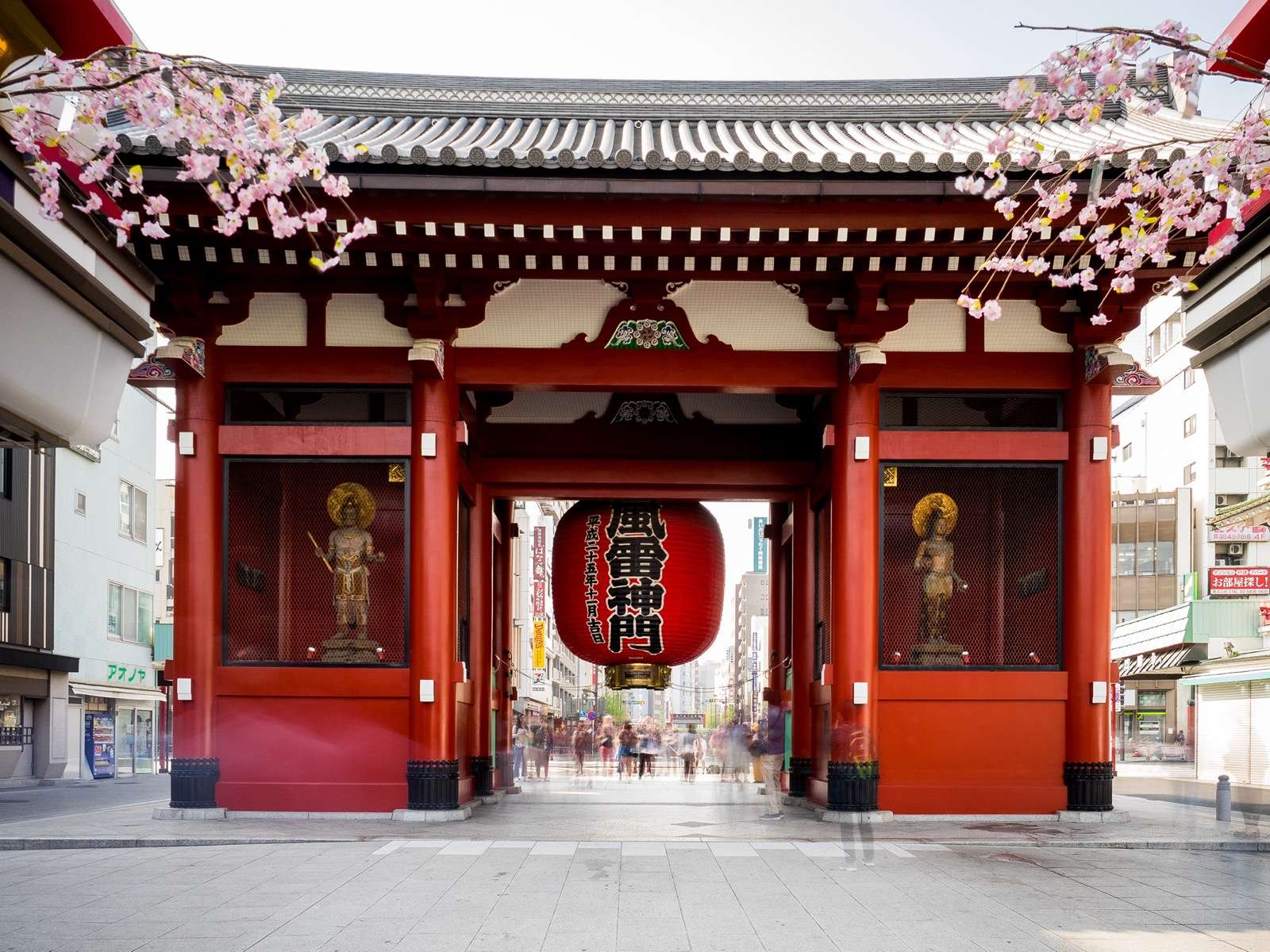
On This Page
The Kaminarimon, known as the Thunder Gate, is an iconic symbol of Asakusa, marking the entrance to the historic Sensoji Temple. This striking gate, famed for its massive red lantern and protective deities, stands as a symbol of Japan’s rich cultural heritage. The lantern, weighing about 700 kilograms, features a dragon sculpture at its base and bears the kanji for “Thunder Gate.” Flanked by the statues of Fujin (Wind God) and Raijin (Thunder God), the gate is a popular attraction for its historical significance and architectural beauty.
Tracing its history back to when Taira no Kinmasa prayed for a transfer to Musashi Province in 941 AD and later donated buildings to Sensoji, the Thunder Gate has stood as the magnificent entrance to the famous Sensoji Temple. The gate has experienced multiple reconstructions due to fires and natural disasters. The most recent incarnation was built in 1960 with contributions from Kōnosuke Matsushita, founder of the company now known as Panasonic. Rising 11.7 meters high, spanning 11.4 meters wide, and constructed of reinforced concrete, the gate’s vermillion facade and statues have been a constant through the ages, embodying the intersection of Shinto and Buddhist traditions with Fujin and Raijin at the front and the dragon deities Tenryu and Kinryu at the rear.
Despite its turbulent history, the current Thunder Gate stands resilient, receiving major renovations every 10 years. Visitors often admire the blend of Edo period and Meiji period craftsmanship seen in the statues, which combine historical heads and bodies. The renowned lantern, produced by Takahashi Chochin in Kyoto, serves not only as a beacon for pilgrims and tourists but also as a cultural emblem, frequently depicted in ukiyo-e prints that popularized its image across Japan.
The Thunder Gate’s significance extends to festivities, as during the Sanja Matsuri, when the lantern is carefully lifted and folded to allow passage for mikoshi, and is also folded to prevent damage from typhoons or strong winds, illustrating the gate’s functional design and the community’s reverence for its preservation.
For those visiting Kaminarimon, it is recommended to take a moment to appreciate the less-noticed details, such as the dragon sculpture at the lantern’s base, a feature of the original lantern. Venturing through the gate, one should not miss the opportunity to explore Nakamise Dori Shopping Street, a bustling shopping street that leads to the heart of Sensoji Temple, where the historical and cultural journey continues. Nearby, the Asakusa district offers a glimpse into Tokyo’s past, with traditional shops and eateries that have welcomed travelers for centuries.
Getting There the easiest way to reach Kaminarimon Thunder Gate
Around Kaminarimon Thunder Gate
Nearby in Tokyo the best attractions close to Kaminarimon Thunder Gate
Asakusa Chikagai Underground Shopping Street
A labyrinthine underground shopping street with retro Showa Era charm
Hanayashiki Amusement Park
Japan’s oldest amusement park, a journey through time with Edo-period charm
Nakamise Dori Shopping Street
A historic avenue of commerce and culture leading to Tokyo’s Sensoji Temple
Sensoji Temple
Founded 645 AD, Tokyo’s oldest temple and an ancient hub of spirituality and tradition.

